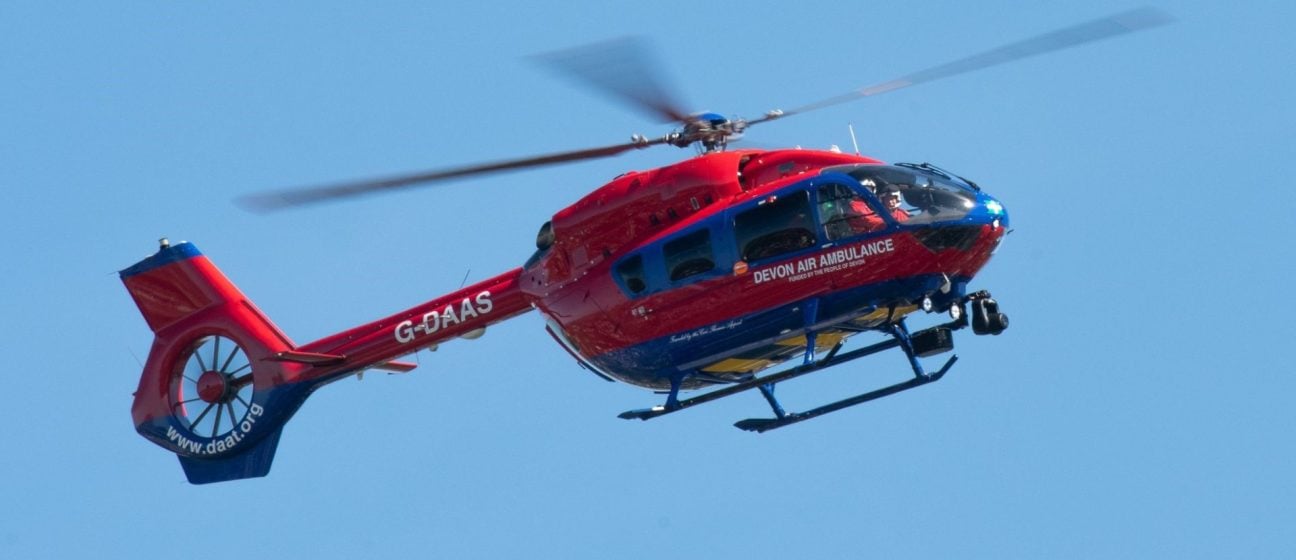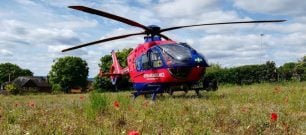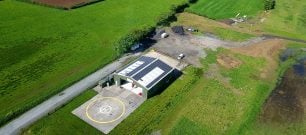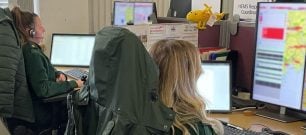
What is the impact of downwash? How does it affect the surrounding area, people and property? Read about how to stay safe when our aircraft is landing close-by in your community.
In 2020 our crews undertook 1101 missions by our two aircraft with 406 missions by our two Critical Care Cars.
Our skilled pilots always seek to establish the safest possible place for the aircraft to land to protect crews, patients and the public as well as property.
There are a significant number of factors and calculations pilots must make when setting down, from anticipating the potential for hidden obstructions, such as a fence post, wires or overhead cables, to the stability of the ground (on snow, boggy terrain or sand) as well as the impact of the downwash generated by the aircraft blades.
This article describes how a pilot (not from DAA) sought to avoid issues created by downwash but was thwarted by another obstacle. The pilot sought to reposition the aircraft having identified an FOD hazard and encountered further difficulty, which demonstrates how ad hoc landings are inevitably tricky and the effects of downwash are a top consideration.
When you see the red helicopter landing in your community, there are some things to be aware of about the impact of downwash so you and those around you can keep safe.
How is downwash generated?
Downwash occurs as a result of the helicopter blades working to keep the helicopter in the air. It can in effect produce localised winds of 50-60 mph for a medium sized helicopter and will be more noticeable to a bystander when the helicopter is near the ground as the downwash disperses when it strikes the surface and bits of debris often get blown around.
What is the unintended impact of downwash?
Given the nature of the airflow, anything likely to be moved by a 50mph wind can and will get moved. This can be anything from sand / grit, to advertising boards, fences, car doors, wheelie bins, old greenhouses and gazebos.
The movement of such objects from downwash is often termed Foreign Object Debris or FOD. The pilot will always assess an ad-hoc landing for a number of reasons, not least FOD and check for such likely debris / loose articles, but these are not always easy to see from the air.
The impact of FOD is that it has the potential to cause impact damage to persons or property and can either strike the helicopter or be ingested into the engines.
Why it is important that we land where we do?
We will always seek to land at the closest possible point to the patient having taken into account amongst other things availability of access. In some circumstances this may be in a very confined space and adjacent to frangible objects. The ‘risk’ to the patient in delaying a landing or moving further away is also considered.
What safe behaviour can bystanders undertake at scene?
If one of our helicopters is approaching, keep well clear, remove or secure any potential obvious loose articles, and turn way from the helicopter as it lands. If you have children with you please be sure that they are instructed to keep clear, keep them close if possible and ensure they turn away too. The downwash can throw up grit or sand so covering children’s eyes / face can help them to remain safe.
What should I do on the occasion that property is damaged?
If the downwash from one of our aircraft unfortunately impacts your property, then please contact us. We will ask you to share with us some evidence of the damage, a description and photographs which will help us to decide how to proceed.



